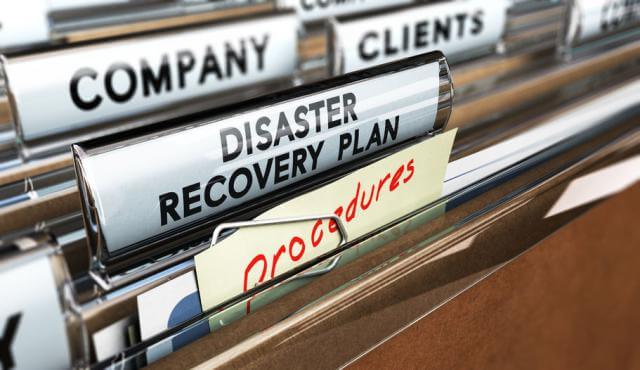

Share on social..
How long could your company keep trading if your IT system suffered a catastrophic failure? A week? A day? An hour? In our fast-moving world where the majority of companies rely on being online in order to function and trade, the loss of access to your IT system, for whatever reason, could mean the difference between being in business and going out of business.
That is why it is so necessary to plan holistically for such an event, so that whatever the event that results in an interruption, you will always have a disaster recovery plan (DRP) in place.
What is a catastrophic disaster?
Your business doesn’t need to burn to the ground or have a terrible flood to suffer a catastrophic disaster. In IT terms, your business could be severely affected if the phone line is down for a couple of days, or a digger on the building site down the road accidentally cuts through your internet connection.
One of our clients was once prevented from accessing the office after a building two doors down collapsed – there was no damage at all to the client’s building, but staff weren’t allowed back into it for over a week. They, thankfully, had properly planned with us and were able to remotely access the essential data they needed in order to function, which was averted a disaster for the business.
Recovery time objective and recovery point objective
Timing is critical so, as a company, you need to decide what your recovery time objective (RTO) is, i.e. how long it takes to get all your data back. You also need to consider the recovery point objective (RPO) and how much information you can afford to lose which will inform how often your system needs to be backed up.
It basically comes down to deciding how long your business can survive without ‘air’ – the most essential elements that will allow you to continue trading: seconds, minutes, hours, days?
There are mechanisms that would allow your data to become available in real-time if necessary, meaning your clients and customers would be unaware that anything had gone wrong. Clearly, that would be an expensive option, but for some businesses, the amount of money they would lose by having any downtime would more than justify the cost.
Business continuity
In the parts of the United States where hurricanes are common, many companies have secondary offices in other parts of the country, enabling them to continue without a break in trading even if the worst happens. Thankfully the British weather does not necessitate this extreme in terms of DRP, but your company does need to consider and prepare for all aspects of what can go wrong.
For instance, if you were left without wired access to the internet, your business continuity plan needs to think about 4G dongles. Communication mechanisms also need to be considered – if all your client contact data is in a CRM system, telephone numbers and email addresses need to be synchronised to another system where they can be retrieved.
We live in an increasingly uncertain world and if your company is to survive a catastrophe of any kind, you need to have a DRP in place. After the Manchester bombing in 1996, for instance, over 40% of the businesses affected by it went out of business. The government subsequently produced a useful Board-level guide to business continuity planning which is still relevant today.
If you would like us to help you with the IT aspects of your disaster recovery plan in order to ensure business continuity, contact us to discuss your requirements.